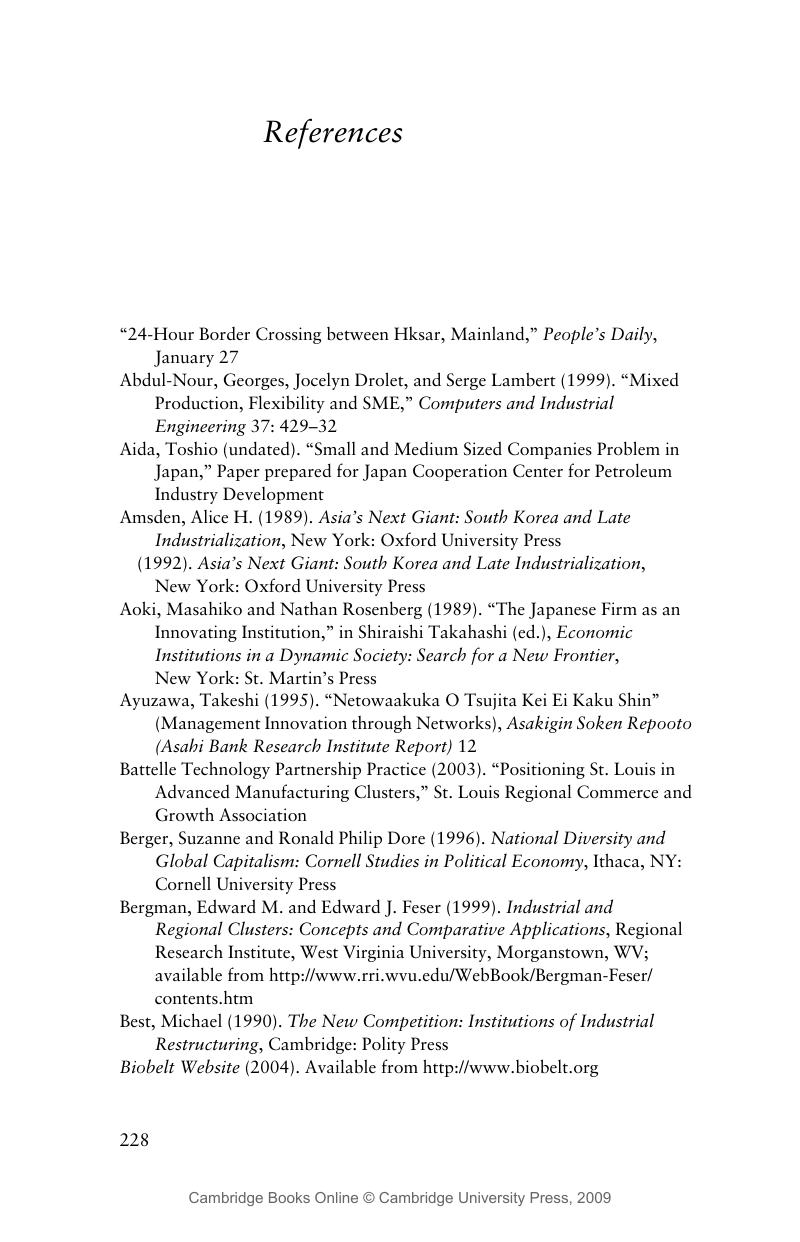Book contents
- Frontmatter
- Contents
- List of figures
- List of tables
- Acknowledgments
- Abbreviations
- 1 Introduction
- 2 Regions and firms
- 3 Innovation theory: firms, regions, and the Japanese state
- 4 Japan's quest for entrepreneurialism
- 5 Networks and firms
- 6 The Kyoto Model
- 7 Regions in comparison
- 8 Conclusion
- APPENDIX
- References
- Index
- References
References
Published online by Cambridge University Press: 22 September 2009
- Frontmatter
- Contents
- List of figures
- List of tables
- Acknowledgments
- Abbreviations
- 1 Introduction
- 2 Regions and firms
- 3 Innovation theory: firms, regions, and the Japanese state
- 4 Japan's quest for entrepreneurialism
- 5 Networks and firms
- 6 The Kyoto Model
- 7 Regions in comparison
- 8 Conclusion
- APPENDIX
- References
- Index
- References
Summary

- Type
- Chapter
- Information
- Innovation and Entrepreneurship in JapanPolitics, Organizations, and High Technology Firms, pp. 228 - 241Publisher: Cambridge University PressPrint publication year: 2005



